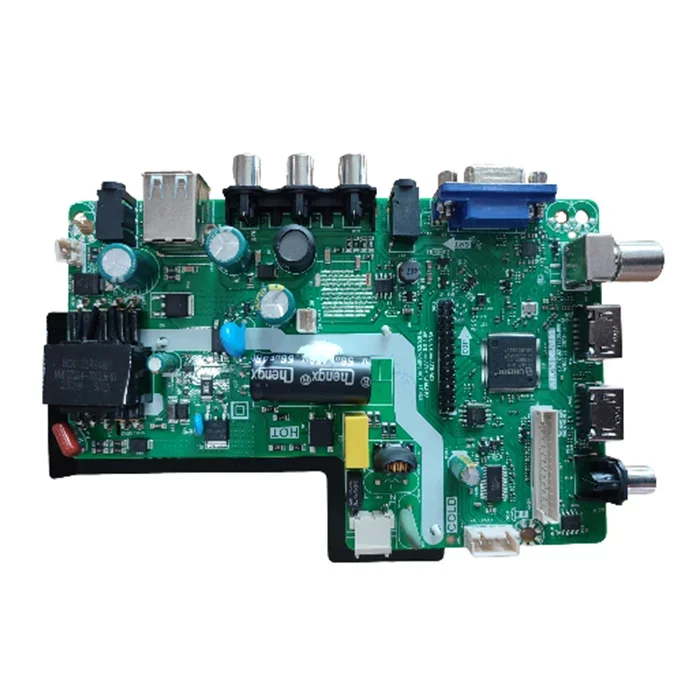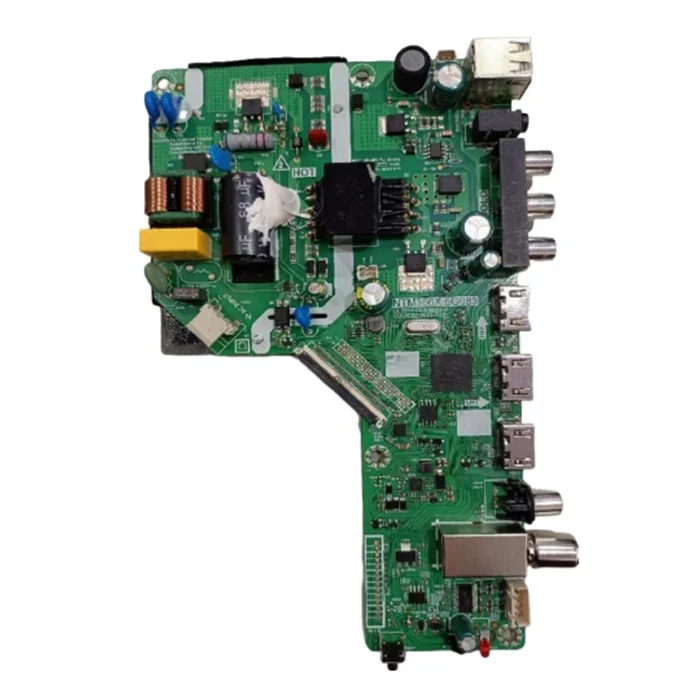Analog television sets were once the primary source of home entertainment, delivering broadcast signals through a complex system of components, with the motherboard being a crucial part. The analog TV motherboard is responsible for controlling and coordinating various functions within the television, ensuring the reception and display of the audio and video signals. In this article, we will explore how an analog TV motherboard works and delve into its essential functions. Linked Vision Chip, a leading provider of advanced semiconductor solutions, offers insights into the inner workings of analog TV motherboards.
I. Understanding the Analog TV Motherboard
1.Role of the Motherboard:
The motherboard, often referred to as the mainboard or logic board, acts as the central control unit of an analog TV. It houses multiple integrated circuits (ICs) and other components that enable the reception, processing, and display of audio and video signals. The motherboard is responsible for coordinating the functions of various TV components to deliver a seamless viewing experience.
2.Components of the Analog TV Motherboard:
a. Tuner: The tuner is an essential component of the analog TV motherboard. It receives the broadcast signals and converts them into usable audio and video signals.
b. Demodulator: The demodulator extracts the audio and video data from the received signals. It converts the modulated signals back into their original form.
c. Video Processing Circuitry: The video processing circuitry on the motherboard is responsible for enhancing and formatting the video signals. It adjusts the brightness, contrast, and color levels to optimize the visual output.
d. Audio Processing Circuitry: The audio processing circuitry decodes and amplifies the audio signals received from the demodulator. It ensures that the audio output is clear and synchronized with the video.
e. Microcontroller: The microcontroller is the brain of the analog TV motherboard. It processes commands from the remote control, controls the user interface, and manages various functions of the TV, such as channel selection, volume control, and menu navigation.
f. Memory: The motherboard also contains memory chips that store firmware, settings, and user preferences. This allows the TV to retain information even when powered off.

II. Functions of the Analog TV Motherboard
1.Signal Reception and Demodulation:
The primary function of the analog TV motherboard is to receive the broadcast signals from the antenna or cable connection. The tuner on the motherboard selects the desired channel, and the demodulator extracts the audio and video data from the signals. These signals are then processed further for display and audio output.
2.Video Processing and Display:
The video processing circuitry on the motherboard enhances and formats the video signals received from the demodulator. It adjusts the brightness, contrast, and color levels to ensure optimal picture quality. The processed video signals are then sent to the display panel, where they are converted into visible images.
3.Audio Processing and Output:
The audio processing circuitry decodes and amplifies the audio signals extracted from the demodulator. It ensures that the audio output is clear and synchronized with the video. The amplified audio signals are then sent to the speakers or audio output ports for playback.
4.User Interface and Control:
The microcontroller on the motherboard provides the user interface and control functionalities of the analog TV. It processes commands from the remote control or front panel buttons, allowing users to navigate through menus, select channels, adjust volume, and access various features and settings.
5.Memory Storage and Firmware:
The motherboard contains memory chips that store firmware, settings, and user preferences. This allows the TV to remember the last selected channel, volume level, and other personalized settings even after it is powered off. The firmware stored in the memory can be updated to provide new features or improve the TV's performance.
III. Linked Vision Chip: Proven Analog TV Motherboard Technology
Linked Vision Chip is at the forefront of developing advanced semiconductor solutions for analog TV motherboards. Their cutting-edge technologies enhance the performance and functionality of these motherboards, ensuring a superior viewing experience. With their expertise in integrated circuits and system design, Linked Vision Chip continues to push the boundaries of analog TV technology.

Conclusion
The analog TV motherboard plays a vital role in the reception, processing, and display of audio and video signals. It coordinates various components and functions to deliver a seamless viewing experience. Understanding how the analog TV motherboard works and its essential functions provides insights into the complexity and sophistication behind this widely used entertainment device. Linked Vision Chip's commitment to advancing analog TV technology ensures that these motherboards continue to evolve, providing enhanced performance and superior picture and sound quality for users around the world.






